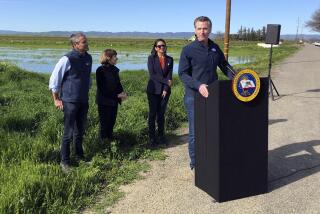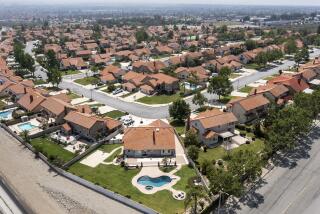Impact of Drought
- Share via
As an economist, it continually amazes me how many times and in how many different areas the simple logic of exchange has to be restated in the face of adverse government policy, as Edward Lazear’s “Water for the People” (Commentary, Feb. 5) does quite capably.
For water, as for other goods, self-interest will lead people to expand their use of it as long as the benefits to them exceed the cost to them. When government policy faces different groups with dramatically different prices for water (e.g., heavily subsidized agricultural versus urban users), each will rationally act as if that water is worth what they pay to many agricultural uses of far less value than either the cost of acquiring it or the value other users would place on it. Further, this means that there is the basis for mutually beneficial trade that would reflect the true value of water and move it from lower to higher valued uses. Unfortunately, the government entities involved in water policy have hindered rather than promoted the development of a rational water market. Instead of providing appropriate incentives to reduce water usage in the least costly ways through market price signals, water policy-makers have preferred such inefficient methods as across-the-board cuts or rationing.
A drought and a water shortage are not the same thing. A drought simply means that there is a reduced supply of water available. A water shortage is an artifact of government policies that have long refused to allow water prices to communicate that fact to users, resulting in the fact that we wish to use more than is available. There is no solution to the drought. But it is a fact we could live with much more easily if we didn’t continue to compound it with poorly conceived policies that do more to prevent than promote appropriate responses.
GARY M. GALLES
Associate Professor of Economics
Pepperdine University
Malibu


